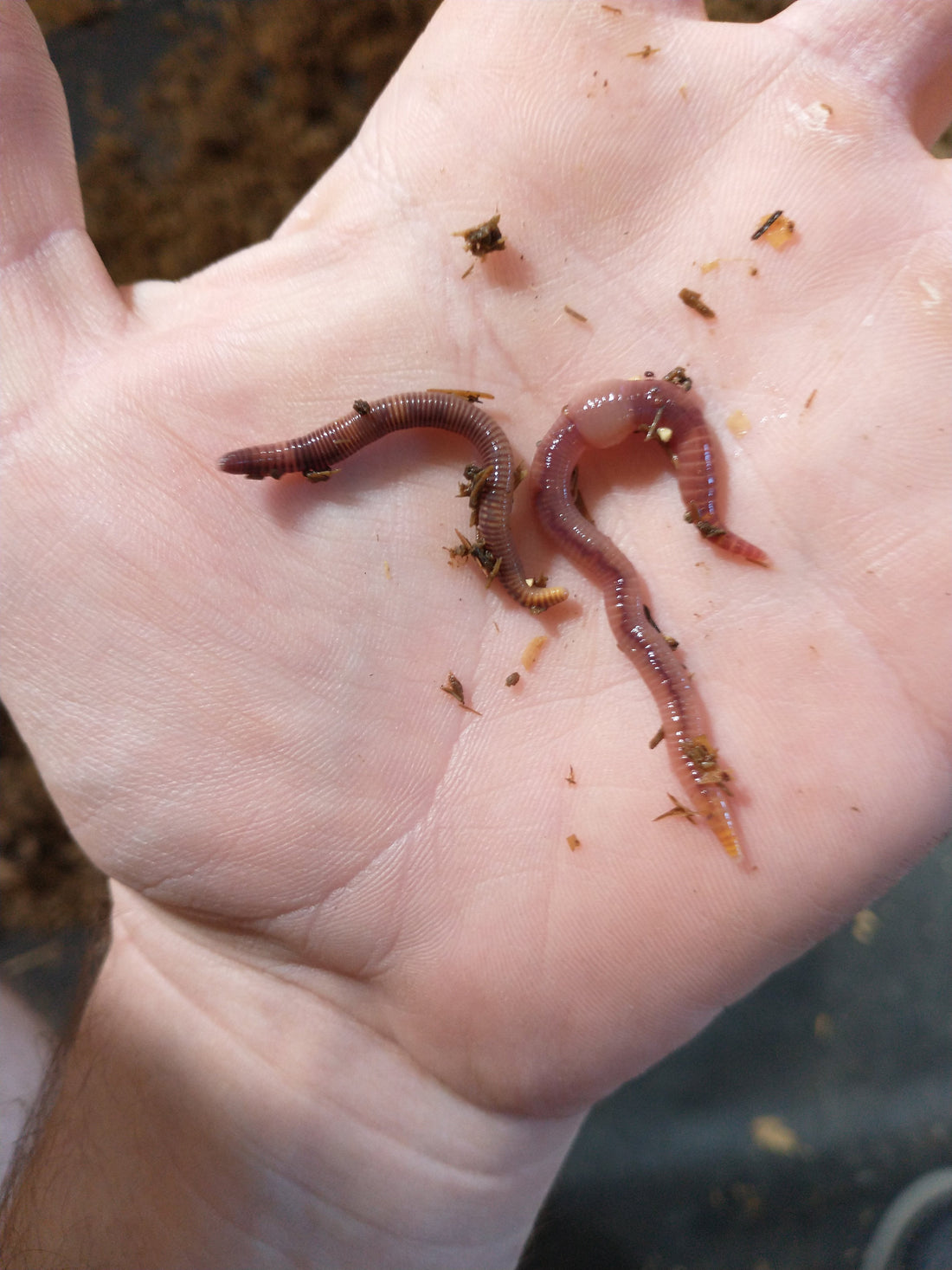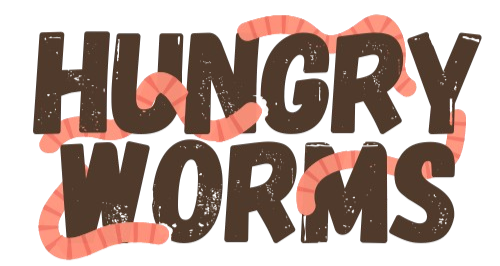
Eisenia Fetida and Eisenia Andrei Identification & Comparison
Share
- Both Eisenia Fetida and Eisenia Andrei are considered "Red Wigglers"
- They have been proven to be distinct species
- Eisenia Andrei may reproduce and consume slightly faster than Fetida
- To know which species a worm is, DNA analysis is required
- Vendors who have not done DNA analysis cannot promise a species
- We are cultivating a stock from Carolina Biological Supply, who has supplied worms labelled as "Eisenia Fetida" for research papers
Are Eisenia Fetida and Eisenia Andrei Distinct Species?
One species is considered a different species than another if is a different species if they are reproductively isolated from each other. This means they cannot interbreed to produce viable, fertile offspring.
Until 2005, it had not been scientifically determined if Eisenia Fetida and Eisenia Andrei were distinct species. They are very similar, and not reliably identified by morphology alone.
Dr. Jorge Dominguez is a worm researcher who has done some pretty wild things, including defining what worms find "attractive" in a mate, measuring sperm output of worms, measuring changes in the thickness of worm's skin based on their feed, and among other things, proving that Eisenia Fetida and Eisenia Andrei are distinct species.
Differences in Vermicomposting Performance of Fetida v. Andrei
This study found that Eisenia Andrei slightly outperformed Fetida in reproductive outputs, both in cocoon production and offspring per cocoon, but not by much. They also cited "The study did not provide convincing proof to substantiate a taxonomic distinction between the two “forms” of Eisenia." further proving that they cannot be distinguished without DNA.
Summarizing a few papers;
How Do I Know if My Worms Are Eisenia Andrei or Eisenia Fetida?
Without a DNA test, you can't!
Dr. Jorge Dominguez also proved that identification by morphology (based on how the worms appear) require DNA analysis to be sure which species you have. Professional laboratories were sent DNA barcoded samples of earthworms to identify, and they were only accurate 17 times out of 28, and these are worm researchers like Dr. Jorge Dominguez who are making these identification attempts - not like us lowly hobbyists and business persons!
So if your worm provider can't provide a DNA report of their worms - they don't actually know which species they have!
However, if you're okay with a "maybe" as to which species you have, Eisenia Fetida are typically more stripy than Eisenia Andrei, which are typically more uniformly dark red.
This picture compares a couple worms I suspect are Fetida (left) and Andrei (right). Please note that the size difference is due to difference in age.
The Problem With People Claiming to Have a Certain Species
At Hungry Worms, we don't claim to know the exact species of worm we have other than that they are Eisenia Red Wigglers. Even though this may put me at a disadvantage with my competitors who are making those claims (without DNA analysis!) I've chosen to do this because promising a specific species without being able to deliver on that promise isn't completely honest, and can be problematic in certain situations.
For most home composters it doesn't really matter that much as to which species you have. Although it would be nice to know that you're getting what you're advertised, the two species are quite similar and you'll get essentially the same results from whichever one you get.
However, it can be a problem within research. Carolina Biological Supply is the main source of worms for studies done in the United States. However, as part of my journey to find DNA certified Eisenia Fetida, when I have contacted them in January of 2024, they responded;
"If you require us to distinguish between E. fetida and E. andrei, we cannot certify that we have one or the other. However, our Eisenia species show the characteristic banding of E. fetida. To the best of our knowledge, the redworm species we supply is Eisenia fetida, based on visual taxonomy."
So not even this company supplying worms for very precise research knows what species they have for certain.
My Search for Eisenia Fetida, and Our Worm Pedigree
I have spent more man-hours than I should have looking for DNA confirmed Eisenia Fetida stock. Several google searches implementing my best "google-fu" yielded nothing. No supplier in the USA has DNA confirmed Eisenia Fetida.
Later, I reached out to Dr. Dominguez himself. He also did not know of anyone in the USA, and referred me to SRI SAI FARM DEVELOPMENT SERVICES in New Delhi, India. After corresponding with them for several months, and applying to USDA Aphis a few times and getting rejected because India is not a Hand Mouth Disease Free country (which neither is the USA? My daughter got it just a few months ago!), I gave up trying to work it out with them.
I then found biaslabs.co.uk in france/germany who has DNA confirmed cocoons of each species. I was excited because they would be coming from a hands food mouth disease free country! After waiting months for my USDA Aphis application, it got denied because they couldn't guarantee they wouldn't come with any other contamination.
I spent some more time searching internationally, but couldn't find anything. I ended up getting some from Carolina Biological Supply in the summer of 2024 and have been breeding those worms since then to become my pure red wiggler stock. I figure if they're good enough for research, they're good enough for me - although I still will maintain scientific integrity and not claim to know that they are actually E. Fetida until I can find a place to do DNA analysis.
